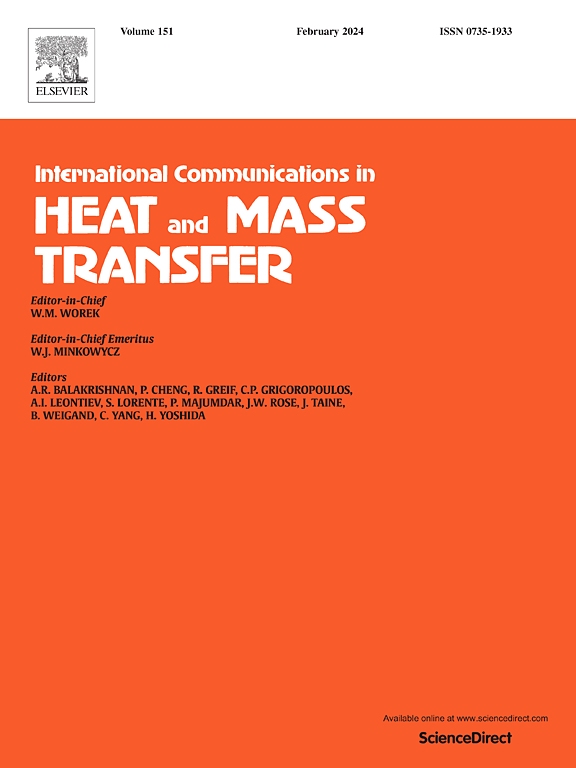A novel 4E-based optimization framework for circular biomass multi-generation systems integrating NSGA-II and ANN to enhance resource efficiency and sustainability
IF 6.4
2区 工程技术
Q1 MECHANICS
International Communications in Heat and Mass Transfer
Pub Date : 2025-03-22
DOI:10.1016/j.icheatmasstransfer.2025.108849
引用次数: 0
Abstract
This study explores an innovative multi-generation energy system designed to improve resource efficiency and promote environmental sustainability. The proposed system relies on biomass as its primary energy source and integrates five main components: a gasification unit, a Brayton cycle, a Rankine steam cycle, an absorption chiller, and a multi-effect desalination unit with thermal vapor compression. Unlike conventional systems, this approach enables the simultaneous production of electricity, heating, cooling, and freshwater from a single renewable source, maximizing energy utilization while reducing carbon dioxide emissions. A comprehensive assessment was conducted from thermodynamic, economic, and environmental perspectives. The study identifies gasification and combustion as the major sources of exergy destruction, impacting overall system performance. To improve efficiency, a heat recovery unit was introduced, leading to a 37 % reduction in carbon dioxide emissions. The system was optimized using a multi-objective genetic algorithm, considering exergy efficiency, energy cost rate, and carbon emissions as key criteria. Under optimal conditions, the system achieved an exergy efficiency of 31.96 %, with compressor pressure ratio and combustion chamber temperature identified as the most critical factors influencing cost. In terms of energy production, the system generated 5830 kW of electricity, with 71 % derived from biomass and 29 % from the heat recovery unit. These findings highlight the potential of biomass-based multi-generation systems as a sustainable solution for addressing rising energy demands while reducing environmental impact.
求助全文
约1分钟内获得全文
求助全文
来源期刊
CiteScore
11.00
自引率
10.00%
发文量
648
审稿时长
32 days
期刊介绍:
International Communications in Heat and Mass Transfer serves as a world forum for the rapid dissemination of new ideas, new measurement techniques, preliminary findings of ongoing investigations, discussions, and criticisms in the field of heat and mass transfer. Two types of manuscript will be considered for publication: communications (short reports of new work or discussions of work which has already been published) and summaries (abstracts of reports, theses or manuscripts which are too long for publication in full). Together with its companion publication, International Journal of Heat and Mass Transfer, with which it shares the same Board of Editors, this journal is read by research workers and engineers throughout the world.

 求助内容:
求助内容: 应助结果提醒方式:
应助结果提醒方式:


